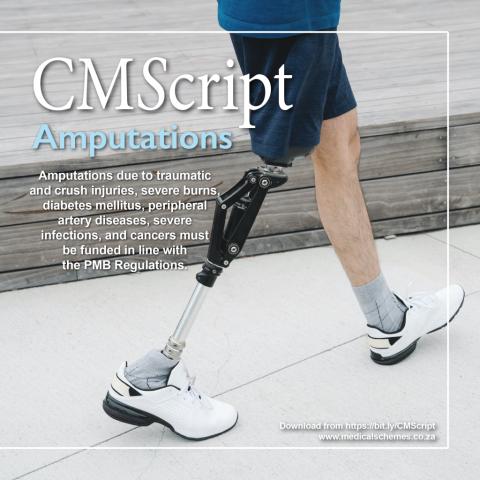
Council for Medical Schemes latest CMScript focusing on amputations under PMB regulations. Amputation, the removal or loss of a body part, can drastically alter a person’s life. It impacts an individual’s mobility, work capabilities, social interactions, and independence. This article explores the causes of amputations, preventative measures, and the journey towards recovery and rehabilitation.
Life After Amputation: Recovery and Rehabilitation
Amputations due to traumatic and crush injuries, severe burns, diabetes mellitus, peripheral artery diseases, severe infections, and cancers must be funded in line with the PMB Regulations. This would include diagnosis, treatment, and care of PMBs irrespective of the member’s option.
Prosthetic limbs replace the function of the lost body part and are recommended based on the type of amputation, the patient’s general health, and the tasks expected to be performed using the prosthesis. However, not all individuals are suitable for a prosthetic limb, particularly those with serious health conditions such as heart failure.
Preventing Amputations
Preventing amputations involves addressing the underlying issues that may necessitate such a procedure. Lifestyle modifications, including a balanced diet, regular exercise, quitting smoking, and maintaining stable blood sugar, blood pressure, and cholesterol levels, are essential. Regular examination of the legs and feet for sores or changes in skin colour or temperature is also crucial.
